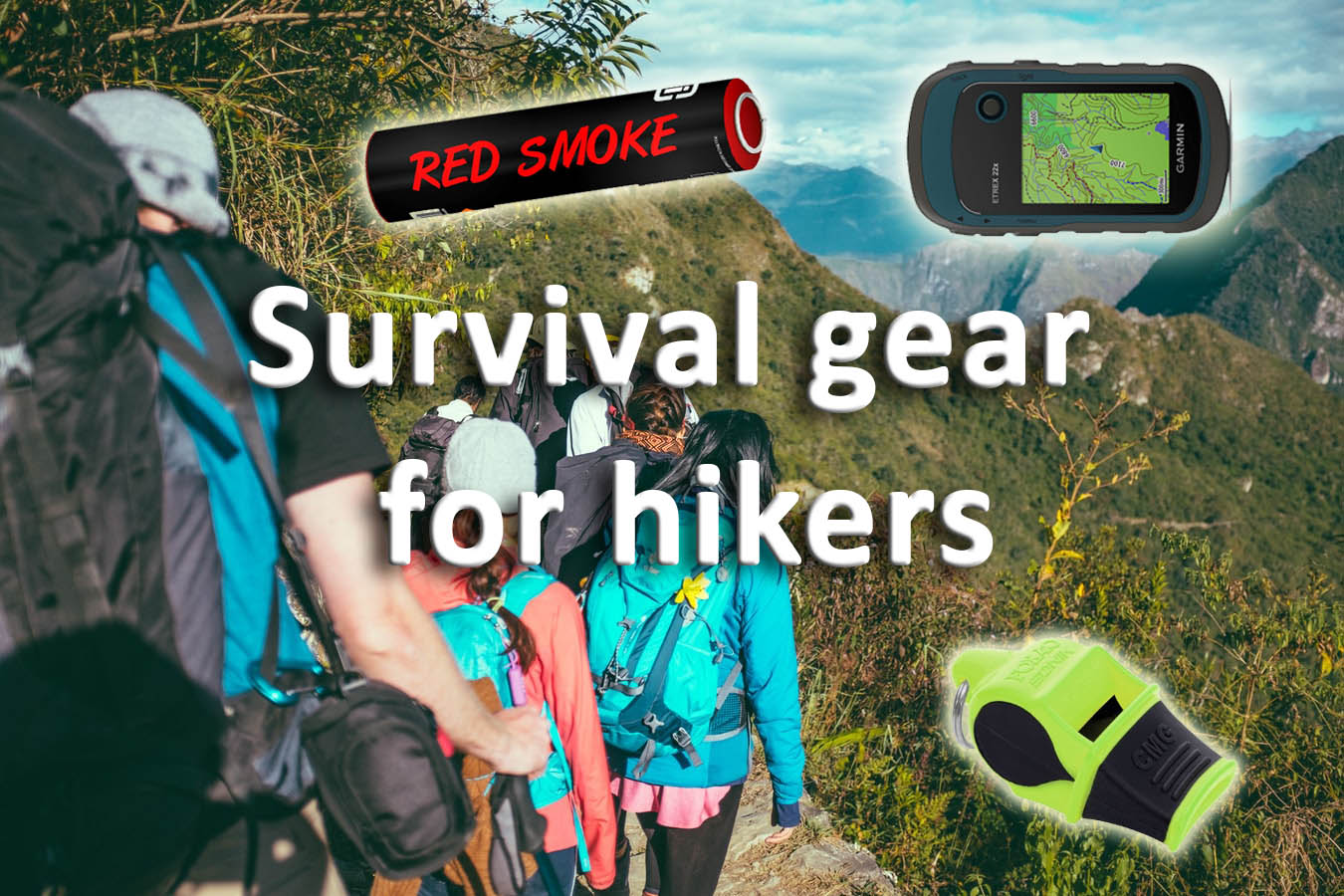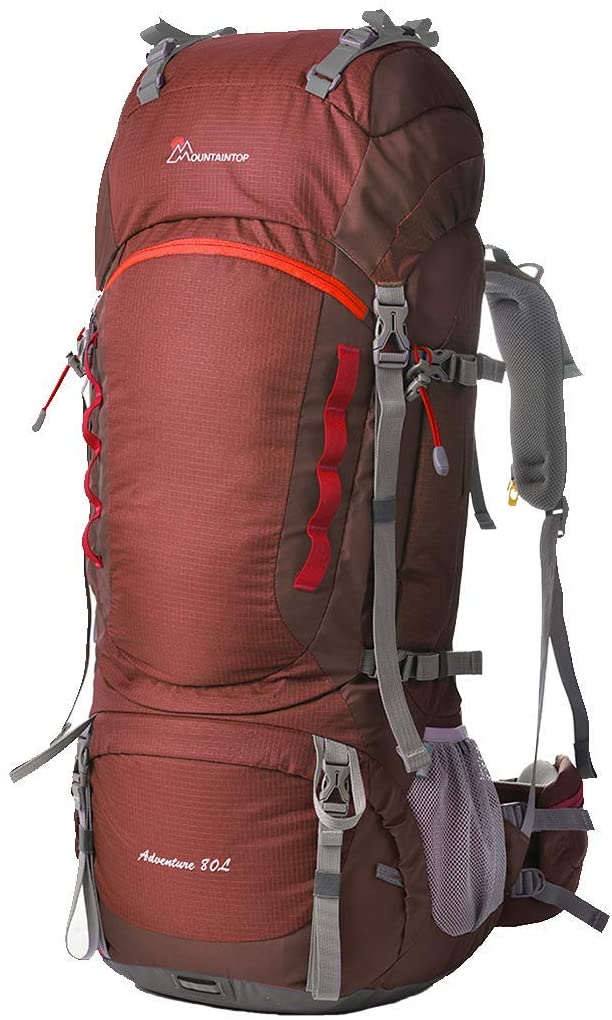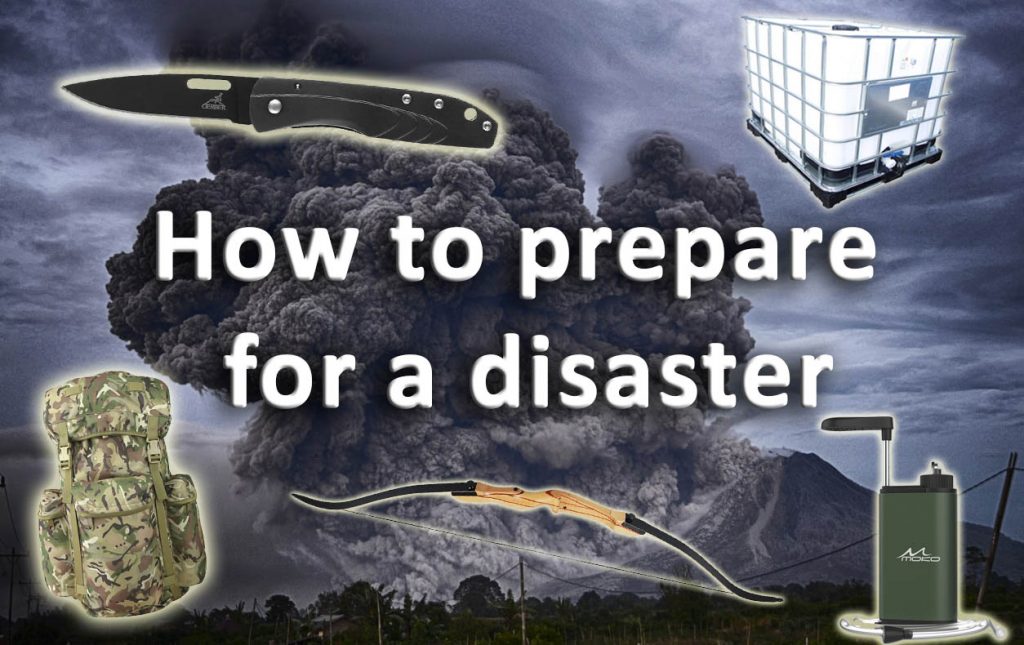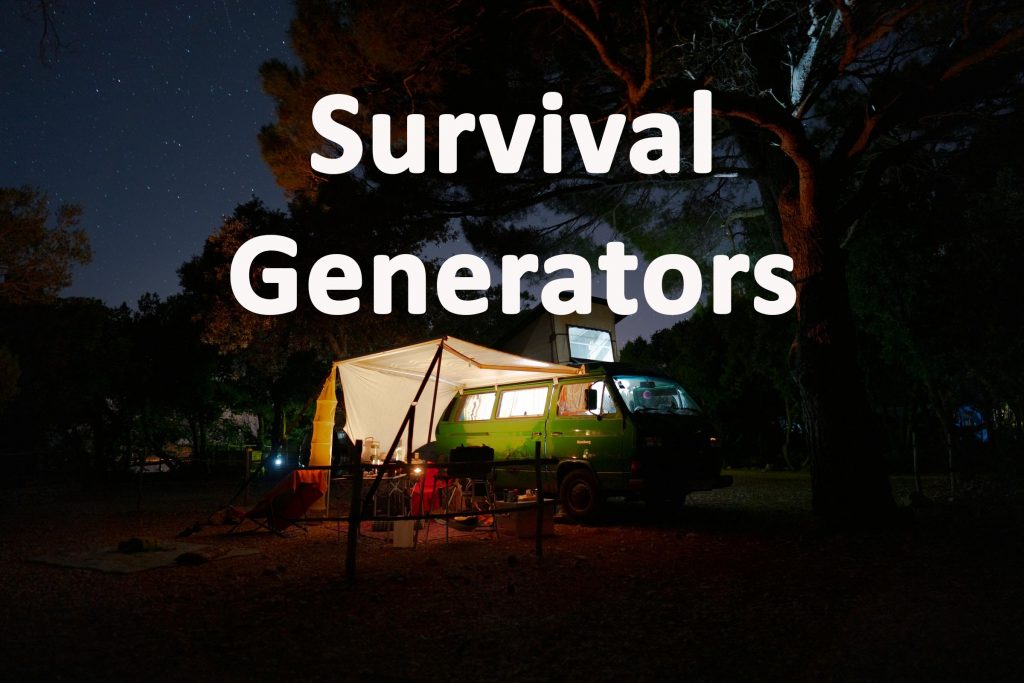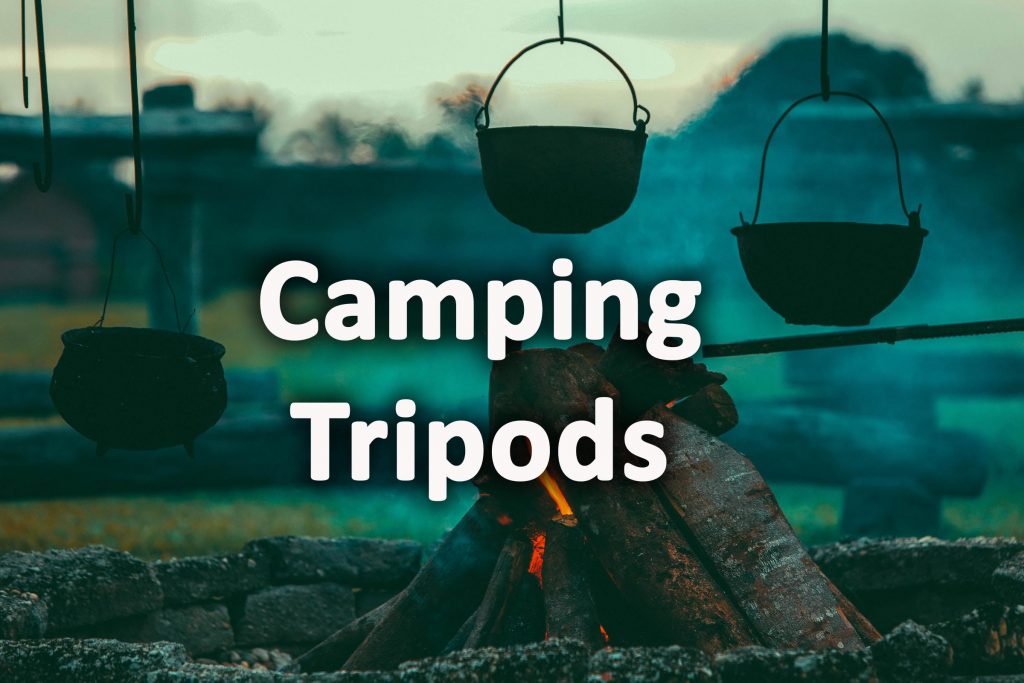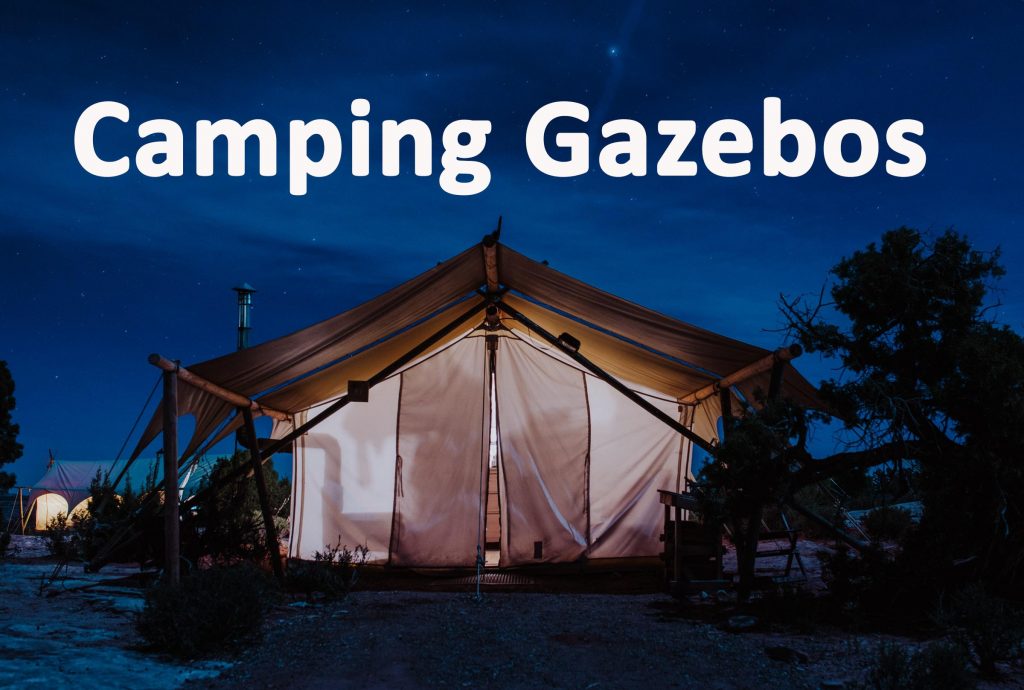This article contains affiliate links
Hiking is a great way of immersing yourself in the outside world. The experience is unique, and the benefits you enjoy are more than what you gain from typical exercise. Hiking can happen anywhere from a public garden or city park to a mountain trail. Hiking, especially in green areas, can relieve your mind from fatigue and stress. It has been suggested that you can also suffer less rumination and become less anxious. In general, hiking will not only keep your mind sharper, but it will also keep your cardiovascular health strong.
It is probably no surprise therefore that millions of people enjoy hiking every year. The best hiking experiences are those which expose you to wild or even wilderness environments. Such raw and rugged landscapes can provide a real boost to our spirit and allow us to experience nature.

However it is important to remember that the further you are from civilization the more risk you carry. Such wild landscapes can mean you are far from help if anything goes wrong. You could slip and fall easily spraining a ankle, leaving you stranded far from help.
Consequently it is recognized that hikers always require some basic survival gear just in case. This can range from the color of your clothing to emergency survival equipment. However every hiker also needs to keep their weight low if they will be travelling long distances. This means essential survival gear for hikers must be space efficient and as light as possible. If you are planning a hiking trip or expedition it is advised you become familiar with the essentials. Hence in this article we have listed the top survival gear for hikers so you can be safe if the worst happens.
1. Water filter
Staying hydrated is essential when it comes to hiking. Note that you can go for days without food but only very few days without water. Keeping in mind however that water is heavy and it is not possible to carry all the water you need to sustain your needs during the hike. Depending upon the sources of water you come across a water filter can be one of the most vital survival gadgets for hikers. Your health is essential, and you cannot rely on any random water source that you come across. Carrying a water filter with you will help reduce the weight of your back pack. These small water filters are light and easy to carry. They can clean water of all bacteria, viruses and contaminants allowing you to refill your water canteens.
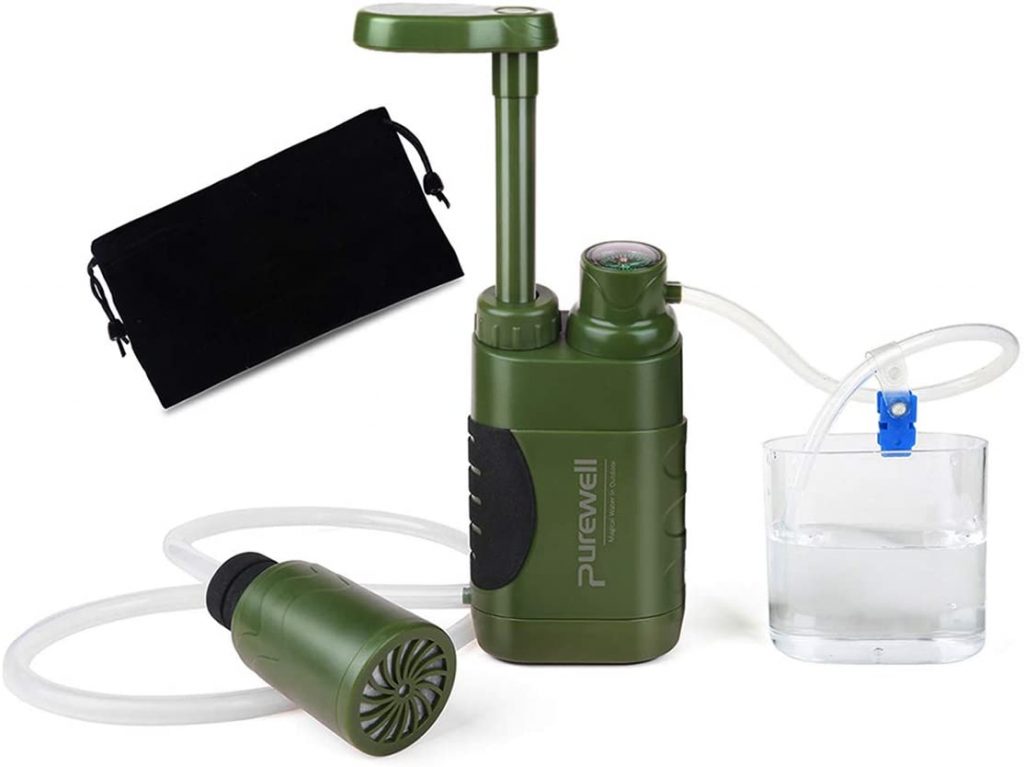 Water filter
Water filter
2. Camping knife multi-tool
A camping knife multi-tool is a must-have when hiking. In the past, hikers and campers used to assemble different tools they would require while in the wilderness. Nowadays, these tools come in a single multi-tool, and you, therefore, don’t have to carry multiple tools. You can use the tool to cut cords, clear paths, make fire, tighten loose screws, and perform other different tasks. You can also use this tool for many emergency uses. This knife does not take a lot of space, and it will help give room in your backpack for other survival gear. One knife of this kind comes with different tools, including tweezers, scissors, rulers, pencils, pliers, and can openers. They also come with hooks, straps, or clips to allow easy attachment to your bag or clothing. These multi use knives come in so many different styles, designs, It is advisable to purchase one based on your intended activities or use.
Camping multi tool
3. Survival bracelet
A survival bracelet can be an essential piece of gear when hiking. It is usually made of woven paracord, and it can be eight to twenty feet in length. You can utilize this in a multitude of different situations. In case of rain or an unexpected overnight stay they can construct a basic shelter. Survival bracelets can also be used to make basic fishing lures. All you need to do is unweave it and attach bait and a hook to some paracord, and then you are good to go. These can also be used to prevent blood loss if you get injured by unweaving it and tying it around a wound. They can be used to mark trails and find your way back from dead end locations. You can do this by unwinding your bracelet and tying them around branches and other visible spots. You can also use it to floss and repair a backpack, among other uses.
Survival bracelet
4. Compass
Compasses are a must-have item of survival gear when hiking when staying on course and not getting lost. One wrong turn, and you are off the trail leading you to become completely lost. A compass will play a great role in the orientation of the map and identification of land features as well as the location of your position. In most cases, a compass is used in conjunction with a local area map. You may not recognize the need for a compass until you go completely off track. Although a simple device learning how to use a compass correctly does take some skill. There are now many resources on land navigation and orientation available online. Do not underestimate just how valuable these pieces of survival equipment are when you are hiking in the countryside.
 Hiking compass
Hiking compass
5. Blast whistle
It is recommendable to carry a loud alert whistle when hiking. The best whistle to use is one with a rating of a hundred decibels or more. If you get lost search parties can hear these from a long distance away. You truth is when hiking you cannot guarantee there will be no danger at all. These whistles will enable you to make a recognized SOS signal when you find yourself in danger. One long blast is all you need to alert a search team of your presence. You can also use two blasts to signal a halt during a light and sound search. Three blasts are used to signify emergency or distress, while four blasts are used to request rescuers to come to you. Ensure that each blast signal lasts for three seconds, and you should repeat it at a regular interval.
Blast whistle
6. Smoke grenade
Smoke grenades are canister-type grenades used as target devices, signaling, decoys or landing zone marking devices. The smoke that comes from the grenades can be particularly important for distressed hikers. When packing your hiking bag it should be among one of your most important assets. It is also beneficial not to mistake a smoke grenade for a smoke bomb. You can use these grenades in different ways. For instance you can use it to scare of a mountain lion or curious bear. It is quite remarkable just how noticeable the smoke is within the landscape. The use of this smoke can also follow a whistle blast in case of an emergency. Rescuers will not take long to identify the source of sound if they can identify the smoke from a smoke grenade.

Smoke grenade
7. Signal mirror
If you find yourself completely lost you can use a signal mirror to help people locate you from afar. This mirror can transmit messages to rescuers who are thousands of feet overhead or a hundred and sixty kilometres away. They are ideal for use in places where there are no electrical outlets or cell phone signal. Note that the signal mirror may not be useful to you if you do not know how to use it. Some signal mirrors come with instructions printed on the side. If your mirror doesn’t have these instructions, you can use it in two basic ways. One of these is sweeping the horizon using the mirror to catch the rescuers’ attention that you have not spotted. If you spot the rescuers, aim the reflected light at them and then send multiple signals.
Signal mirror
8. Headlamp
Carrying a headlamp with you is very important, even if you have no plans of being out at night. When hiking in rural places you always have to be prepared to spend an unexpected night out. Holding a flashlight when you have so much to do with your hands can be very challenging. A headlamp is an ideal solution when it comes to outdoor activities such as hiking and camping. Unlike a torch which you are forced to hold and move along with, you can easily mount the headlamp on your head. This will give you light as you perform other necessary tasks that require the use of both hands. Note that headlamps come with adjustable straps that make them suitable for any person. Most headlamps also have red lights so that the glare does not restrict your night vision.
Headlamp
9. First aid kit
It is not only advisable but also wise to bring a first aid kit on your hiking trip. This kit will not only be useful to you, but you can also use it to assist someone else in need. A first aid kit weighs only a pound and will very easily fit in your backpack. These can carry up to a hundred, different, medical items. When out in the wilderness sometimes the smallest of injuries can lead you in big trouble. A deep cut can lead to excessive blood loss leading to fatigue and weakness. It is also advisable to create a list with your name and other important health details and put them inside the kit. It is always possible you may get injured in a way that only medical professionals can respond to. Such information will allow them to alert a next of kin and find out who you are quickly.
 Hiking first aid kit
Hiking first aid kit
10. Emergency sleeping bag
An emergency sleeping bag is an extremely important piece of survival gear when hiking in hard to reach places. Occasionally you may find that the weather draws in quickly which may force you to hunker down in bad weather. In such an instance the sleeping bag could be the difference between life and death. Emergency sleeping bags are insulated coverings that have a waterproof cover or bivvy which can be zipped up tightly. These are deliberately designed to be lightweight and small so they do not take up too much space in your kit. Your body can’t deal with freezing temperatures at night in the wilderness. All you need to do with a sleeping bag is get inside, zip yourself up, and try to remain as warm as possible.
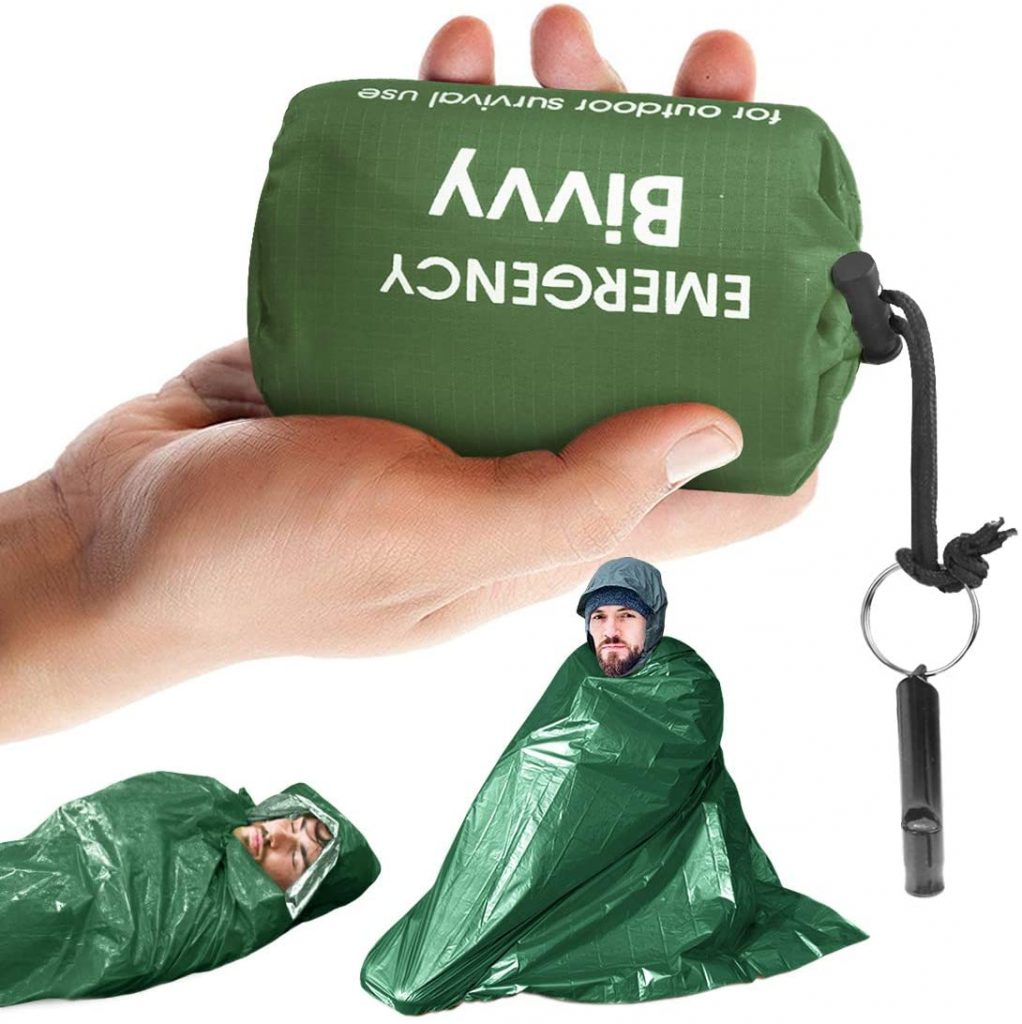 Emergency sleeping bag
Emergency sleeping bag
11. Camping tarp
A camping tarp is a huge piece of waterproof fabric designed to offer extra cover from wind and rain. It is wise to carry a camping tamp when hiking long distances, particularly in an exposed location. These are great to use alongside a tent but these can also be used alone to make shelter. By mounting a tarp over your tent you can create a dry space outside. This can make anytime stuck outside in the wilderness much more bearable. Tarps can also be used as a ground sheet and wrapped around you if it is too windy to erect a tent properly. Although these are not the first piece of equipment a hiker will think of when packing they can be the most vital if things go wrong.
Camping tarp
12. Survival rations
When setting off hiking, most hikers only bring tasty meals without considering how long the food will last. Hiking long distances can burn very many calories and you will need many of them if things go wrong. When it comes to hiking survival rations can be very important if you get stuck out. If you are an expeditionary hiker you may wish to travel distances over many days. In which case dehydrated rations are a great option, these lightweight rations can be rehydrated on the move quickly with boiling water. As a beginner, you may be wondering what is the correct amount of survival rations to take with you. You need to consider the number of hours you will travelling and pack foods providing 200-300 calories per hour; you can however, pack on the higher side just in case you spend more hours out than you planned for. Examples of lightweight nutritious snacks include nuts and seeds, dried fruit, jerky, dehydrated meals, nut butter, instant oatmeal, protein bars, powdered milk, tea and coffee, poultry or fish in foil packets, preserved meats, hard cheeses, and whole grains among others.
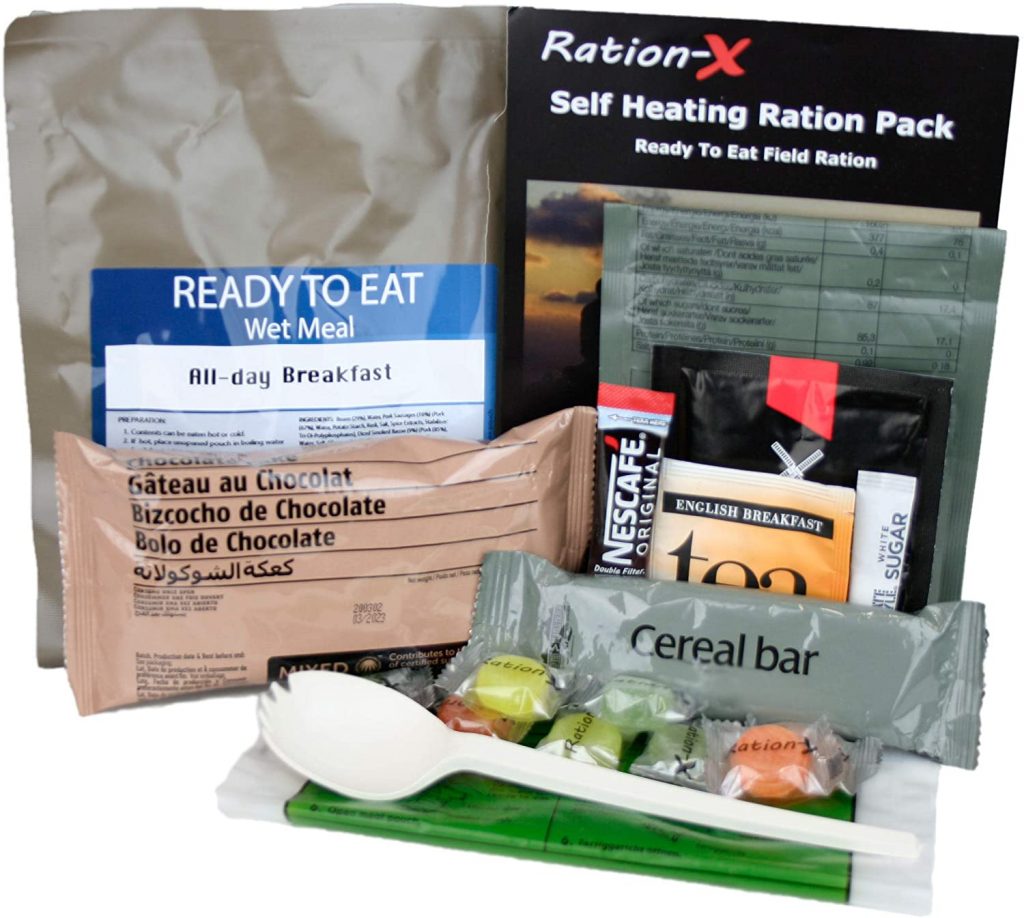 Camping survival rations
Camping survival rations
13. Paracord
Para cord may seem unnecessary when hiking but it can prove to be a very useful commodity. With proper knowledge in the right situation it could even save your life. A paracord that is about 25 meters in length is usually more than satisfactory. You can choose to braid or double up your paracord to create much stronger cordage if required. When cutting cord you can also melt or crimp its ends with a flame to prevent fraying. You can use paracord as a lash to secure hiking gear to your backpack. For instance, you can use it to attach items such as camping knives or even multi-tools so they are easily to hand. If you end up for lost for days on end in the wilderness paracord is great for making hunting traps. One way to do this is to tie a piece of paracord to a stick, after which you can make a noose, load a trap with baits, and then set it.
Paracord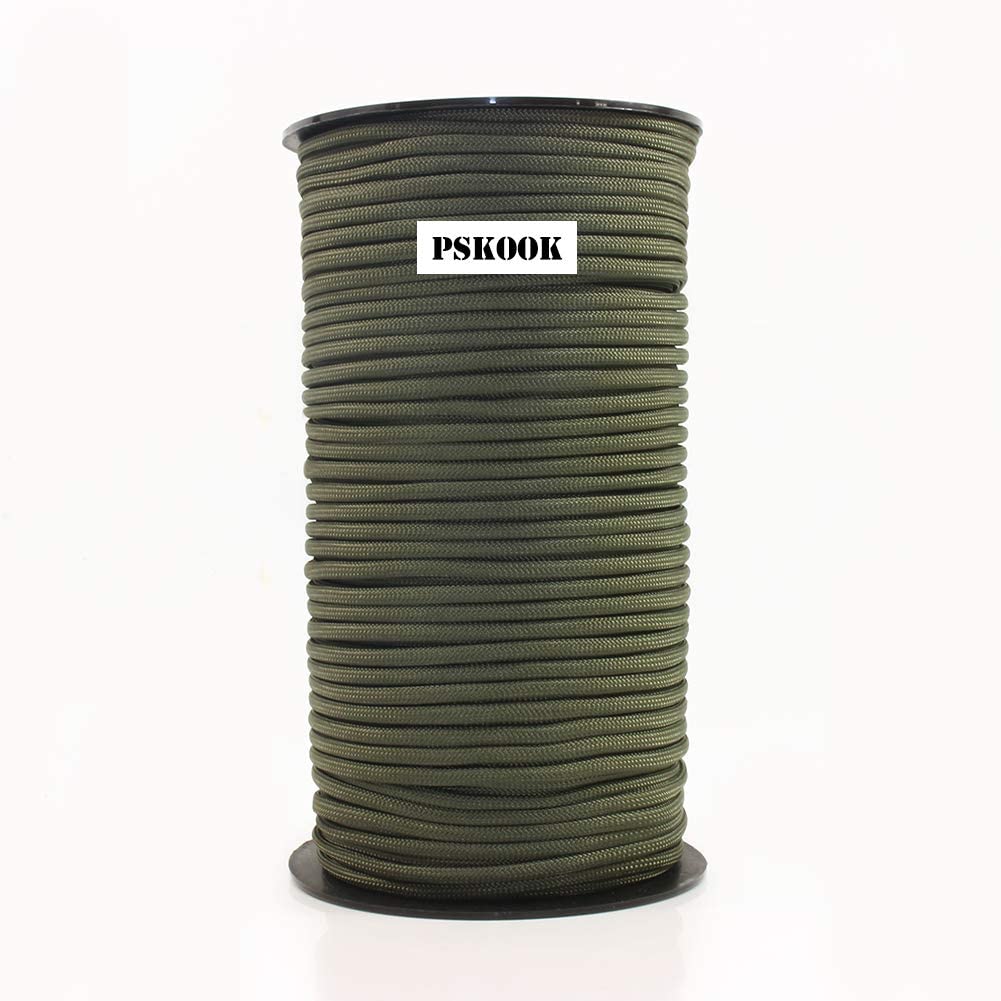
14. Lighter
A lighter or a fire starter is the perfect piece of survival equipment for hikers. This portable device used to generate a flame can easily save your life if you are forced to stay out in cold conditions. You can also use it to ignite different items,, including gas stoves, fireworks, campfire, candles, and cigarettes. Having it in your backpack is very important because chances are you will need to generate a flame for one reason or the other. Carrying more than one firelighter is very important because if one fails you could have a problem. When lighting fire, it is always good to have some safety tips! Always use rocks or dig a pit to allow the fire to stay contained. Without doing so the fire could spread and run out of control. Be thoughtful on where you place your fire. Never light fire directly under low branches and try to make sure smoke isn’t blowing into your shelter.
Camping lighter
15. Waterproof backpack
A waterproof backpack or bergan is one that can keep its contents dry in all weathers. Having such a pack is very important when hiking as wet gear could lead to hypothermia. Nothing can be more disheartening than getting to your destination only to find all your items soaked through. Note that it doesn’t have to be raining for your items to get soaked either. Sometimes you may find yourself walking under a waterfall or crossing a river accidentally making your items wet. Waterproof backpacks come in many shapes and sizes so it is important getting the correct one for you. The waist strap should take most of the weight and the packs mass should be distributed evenly across your back. If your hiking backpack is not completely waterproof some come with a rain protector.
Hiking Back pack
16. Power bank
Portable power banks are a relatively new invention but have become a staple for hiking long distances. This is partly due to the fact smart phones have almost become an essential living requirement. Regardless of if you want to check social media on the move smart phones have some great apps for hiking also. Therefore having a bank of available power when your battery runs low is essential! Being able to call an SOS is very important if you do end up getting lost in a remote location. Most power banks are light and small in size, meaning that you can carry them around without sacrificing extra space. If you want to get the most out of your power bank, keep it from becoming too cold. All you need to do is remember to charge it fully before you leave and make sure it stays dry.
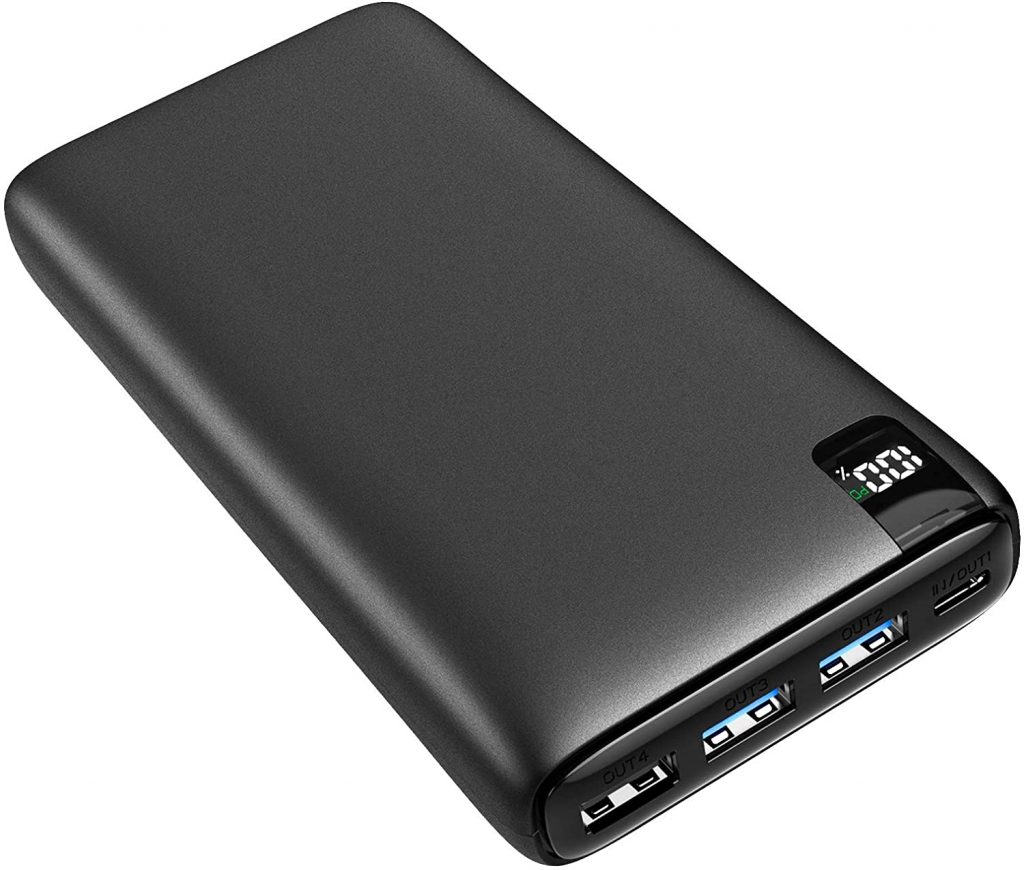 Powerbank
Powerbank
17. GPS unit
A GPS unit can give you real peace of mind when hiking over long distances. Navigation is essential when you are out hiking in rural and remote locations. Knowing where you are will not only keep you safe, but it will also make your trips stress-free. Most people get uncertain of where the next key landmark, campsite, or trail junction is. At times you may find that you have passed such points even without noticing it. With a GPS, you will not have to worry about such issues and be able to stick to route much more efficiently. Some smart phones now actually contain their own built in GPS device. This is even better as this enables you to reduce space in your pack and lighten the load.
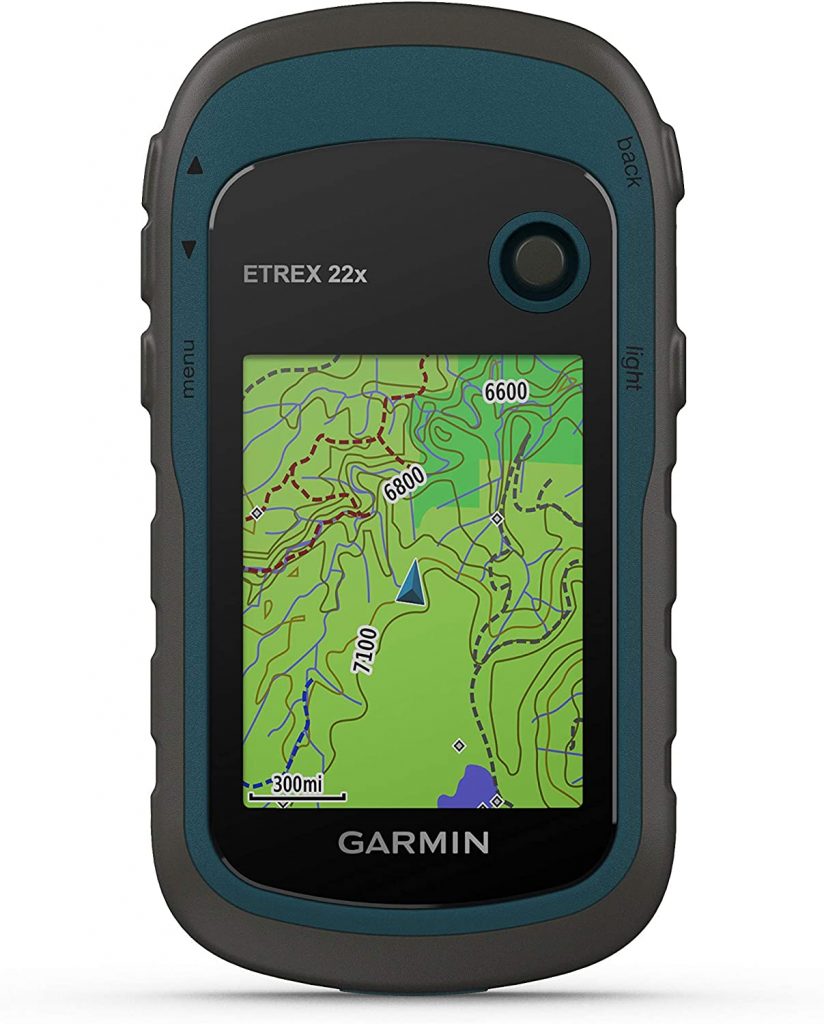 GPS Unit
GPS Unit
Conclusion
Although hiking is an enjoyable and straight forward activity it really is best you are prepared for the worst. Once you become far from civilization or even a road it becomes very difficult to seek help if things go wrong. Hence all hikers should have a certain amount of survival knowledge and training. However even without a great knowledge of survival having good survival items can make all the difference in a bad situation. When planning your next hiking trip just go through our list of survival gear for hikers first. This way you will be able to check you have everything you need when out in the wilderness.
